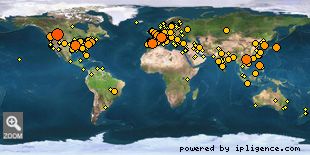 » NMR Jobs
» NMR Jobs |
|
|
|
|
|
|
 » Cool papers
» Cool papers |
|
|
|
|
|
|
 » NMR books
» NMR books |
|
|
|
|
|
|
 » NMR theses
» NMR theses |
|
|
|
|
|
|
 » NMR blogs
» NMR blogs |
|
|
|
|
|
|
 » NMR news
» NMR news |
|
|
|
|
|
|
 » NMR tweets
» NMR tweets |
|
|
|
|
|
|
 » NMR videos
» NMR videos |
|
|
|
|
|
|
 » NMR pictures
» NMR pictures |
|
|
|
|
|
|
 » Online Users: 316
» Online Users: 316 |
| 0 members and 316 guests |
| No Members online |
| Most users ever online was 1,278, 01-09-2024 at 07:38 AM. |
|
 » Welcome!
» Welcome! |
Welcome, NMR world!

Our visitors map.
|

 [NMR paper] 1D and 2D NMR for KRAS:Ligand Binding [NMR paper] 1D and 2D NMR for KRAS:Ligand Binding |
|
Apr 08, 2024 - 3:06 PM - by nmrlearner
|
 1D and 2D NMR for KRAS:Ligand Binding
1D and 2D NMR for KRAS:Ligand Binding
Fragment-based screening by ligand-observed 1D NMR and binding interface mapping by protein-observed 2D NMR are popular methods used in drug discovery. These methods allow researchers to detect compound binding over a wide range of affinities and offer a simultaneous assessment of solubility, purity, and chemical formula accuracy of the target compounds and the ^(15)N-labeled protein when examined by 1D and 2D NMR, respectively. These methods can be applied for screening fragment binding to the...
More...
|

 0 Replies | 55 Views
0 Replies | 55 Views
|
|
 » BioNMR wiki
» BioNMR wiki |
|
|
|
|
|
|
 » NMR discussion
» NMR discussion |
|
|
|
|
|
|
 » NMR conferences
» NMR conferences |
|
|
|
|
|
|
 » NMR software
» NMR software |
|
|
|
|
|
|
 » Pulse sequences
» Pulse sequences |
|
|
|
|
|
|
 » NMR community
» NMR community |
|
|
|
|
|
|
 » NMR presentations
» NMR presentations |
|
|
 » NMR web resources
» NMR web resources |
|
|
|
|
|
|
 » NMR feature requests
» NMR feature requests |
|
|
 » NMR bookmarks
» NMR bookmarks |
|
|
|
|
|
|
 » Stats
» Stats |
Members: 3,202
Threads: 25,755
Posts: 26,141
Top Poster: nmrlearner (23,199)
|
| Welcome to our newest member, bpadmanabhan |
|



